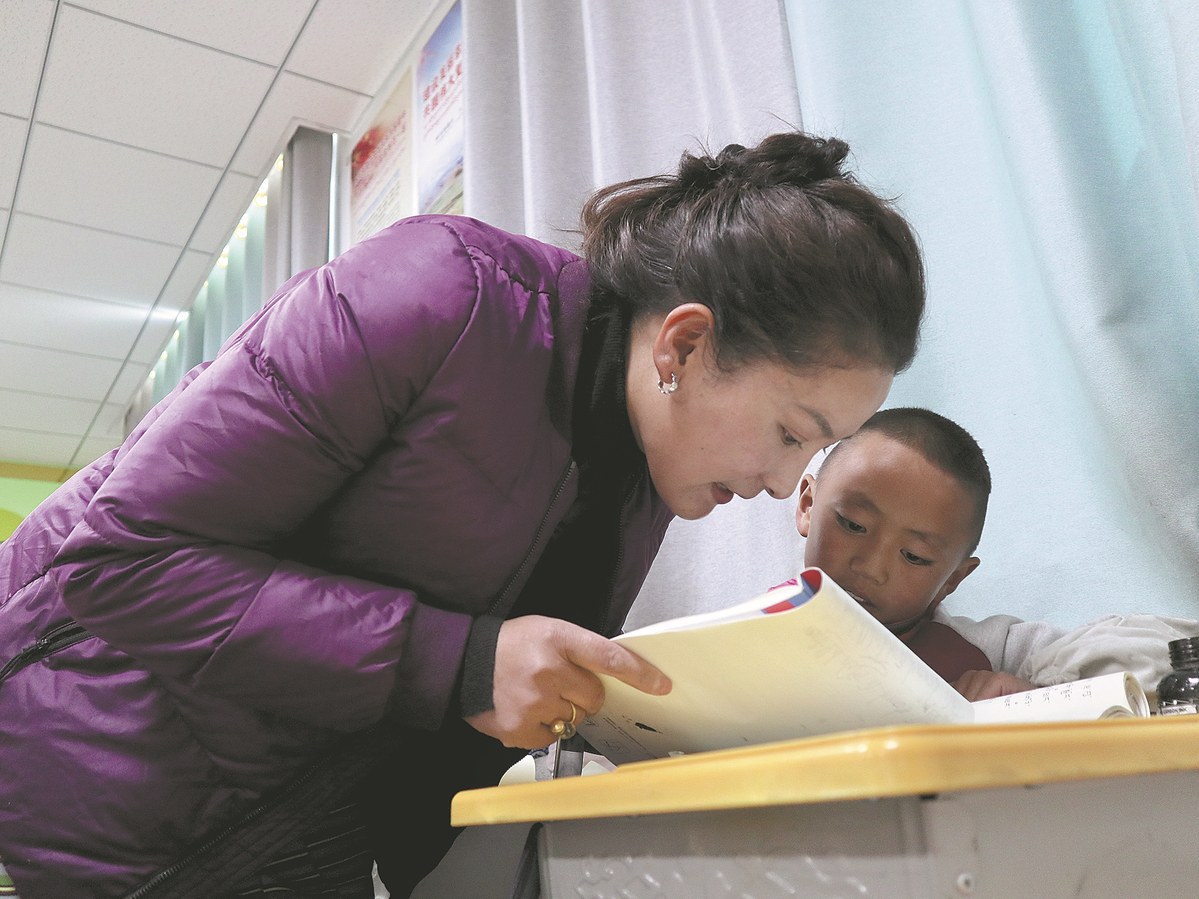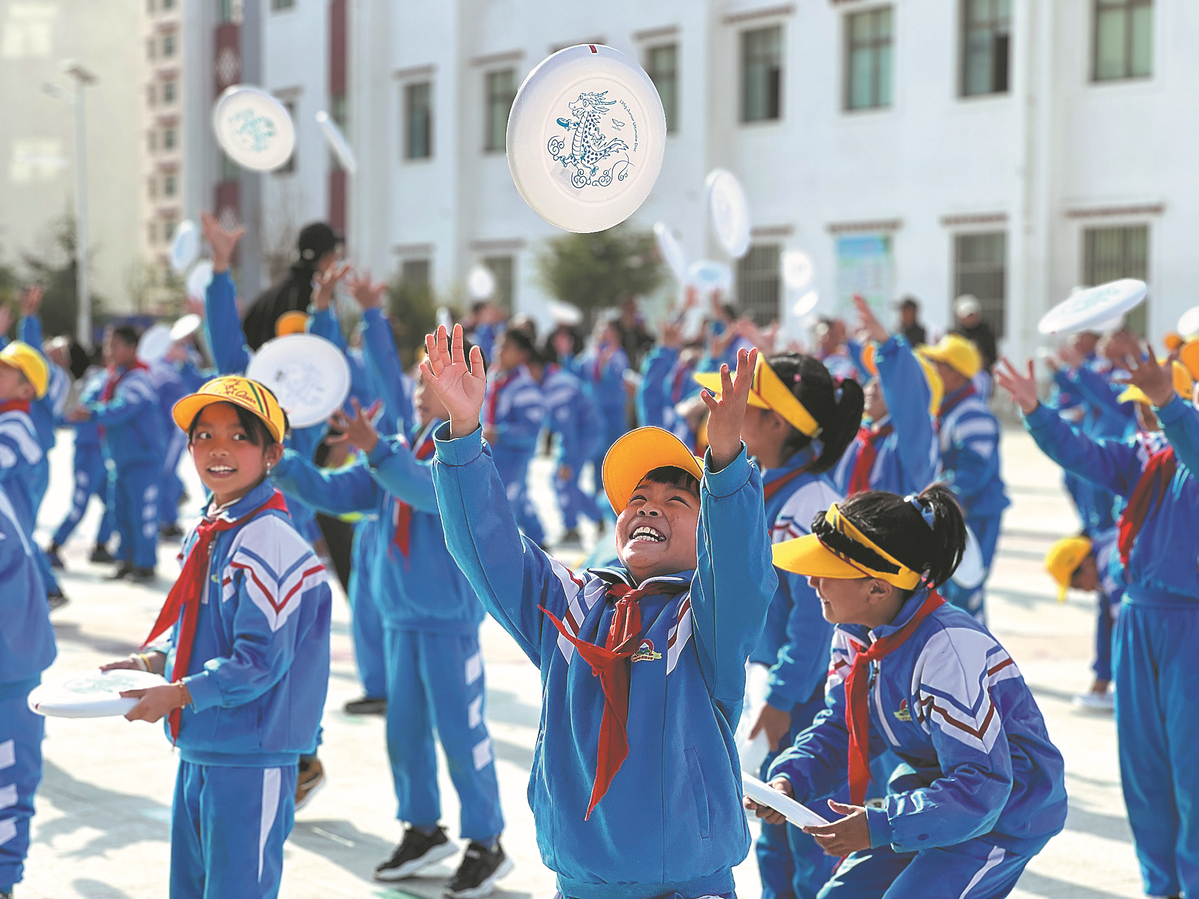
A Tibetan teacher instructs a student at a primary school in Sernyi district of Nagchu, Xizang autonomous region, in October. PALDEN NYIMA/CHINA DAILY
Tsering Drolma said she is very pleased with the central government subsidy she receives that covers all her school costs — including tuition, accommodation and basic study materials — and it is a big help for a rural herding family like hers.
The 17-year-old attends the No 3 Middle School of Nagchu, which is located in Lhasa, capital of the Xizang autonomous region. She has been benefiting from the regional free education policy since she entered kindergarten.
Tsering Drolma's home is located in a remote village, in a place more than 4,300 meters above sea level. Her family makes a living mainly from herding livestock, and they don't make much money.
"It's so great that my parents don't need to spend money on my schooling because my family's financial situation is not very good," she said.
"Our school even provides us with daily needs such as bedding, mattresses and cleaning supplies," she added.
The subsidies Tsering Drolma receives are an example of the efforts the region is making in its educational development.
According to the Xizang Education Department, the region will offer a new round of subsidy increases for students this autumn.
It will be the 21st time the region has raised subsidy standards for students since the central government adopted its sanbao policy, which pays for children's school meals, lodging and tuition. The subsidies, which are distributed by the Xizang government, cover children from kindergarten through senior high school.

Students play frisbee at the Dongcheng Branch of Lhasa Experimental Primary School in April. PALDEN NYIMA/CHINA DAILY
With the next round of subsidy increases, each student will receive 4,620 yuan ($642) per year beginning this fall, 90 yuan more than last year.
The subsidies will cover more than 714,000 students, including the children of farmers and herdsmen, as well as those from financially struggling urban families.
Meanwhile, the region will improve the quality of basic education by building and expanding 26 inclusive kindergartens and 30 primary and secondary schools this year.
Over the past decades, subsidies have been gradually increased, and with various support measures put in place, they are expected to significantly improve the learning and living conditions of Xizang students.
Gyaltsan Dorje, who works in the catering department at the No 3 Middle School, emphasized the significance of sanbao.
"This year, the country and the autonomous region have also introduced a number of new people-oriented policies," he said. "The increase in the subsidy standard is an important policy, and our school is also doing our best to improve the accommodation conditions for our students.
Wangdron, an official from the regional department of education, told China Media Group, "We plan to implement a 250-million-yuan project to provide heating for 40 schools in compulsory education, and build and renovate 400,000 square meters of school buildings for heating this year."
